With plastics claiming much of the headlines worldwide and a major issue in Vietnam, scant attention is thus being paid to other recyclable materials – namely cardboard and aluminum.
On any given day, in every neighborhood, local collectors [known as ve chai ] can be seen pedaling bicycles or driving motorized carts, piling on mounds of flattened cardboard boxes and bags of aluminum cans. These industrious individuals, along with trash collectors, are at the forefront of the recycling industry in Saigon.
Living in proximity to recycling centers in District 7, I have trod the dusty, 2km road along Đào Trí Street numerous times bearing witness to the daily parade of local collectors gathering their materials. This labor intensive work is mostly carried out by women, who have migrated from agrarian, rural areas to urban Saigon. Talking with a few of them, I found their life is generally not an easy one, having left family and farm for higher wages in Saigon. They live together to defray costs and send back funds to their families each month.
I asked Uyên to relate a typical day’s activity. She replied that she generally starts her daily rounds at 7am when stores open. Stopping primarily at mini-markets that get daily deliveries of goods in cardboard cases, she completes the first sweep by 11am. From there, she delivers the haul to a collection center or “recycling middleman.” She is paid VND2,000 per kilo weight for flattened cardboard. Most of these women have established good relationships with stores and businesses in the area and receive their flattened boxes and cans, as opposed to them being left in the street for collection.
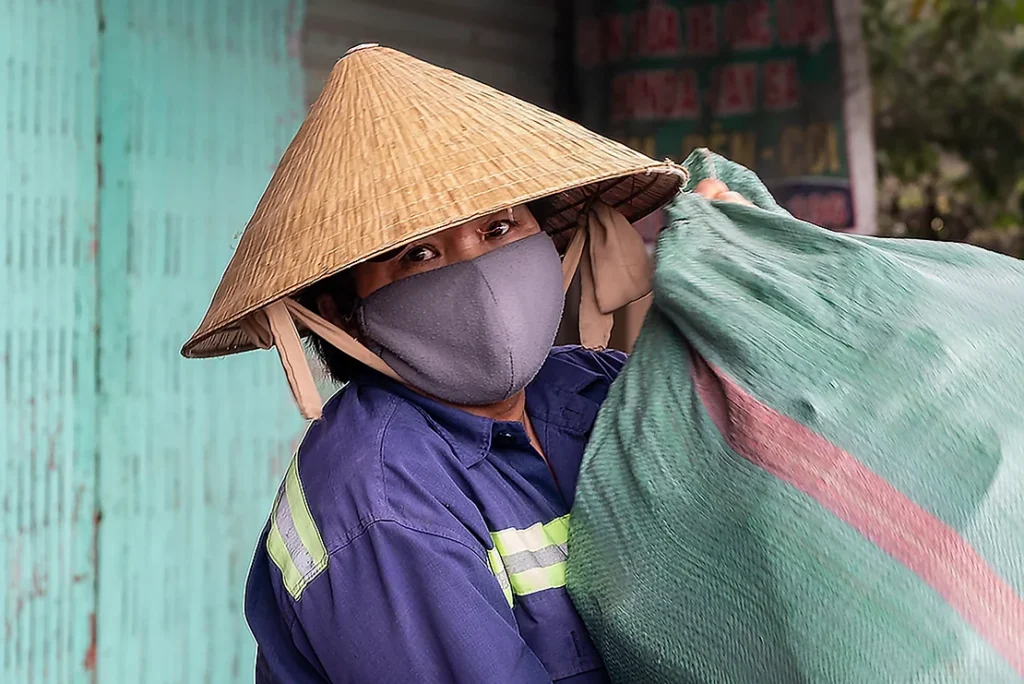
After a small lunch break, she resumes a second collection cycle, at times supplementing her haul with plastic bottles [for which she is paid VND7,000 per kilo] or flattened aluminum beer cans [at VND19,000 per kilo]. Her day ends around 6pm unless another collection sweep is warranted. Belying the fact that is a day job, I have seen these collectors working late into the night, separating the various materials for delivery the next morning.
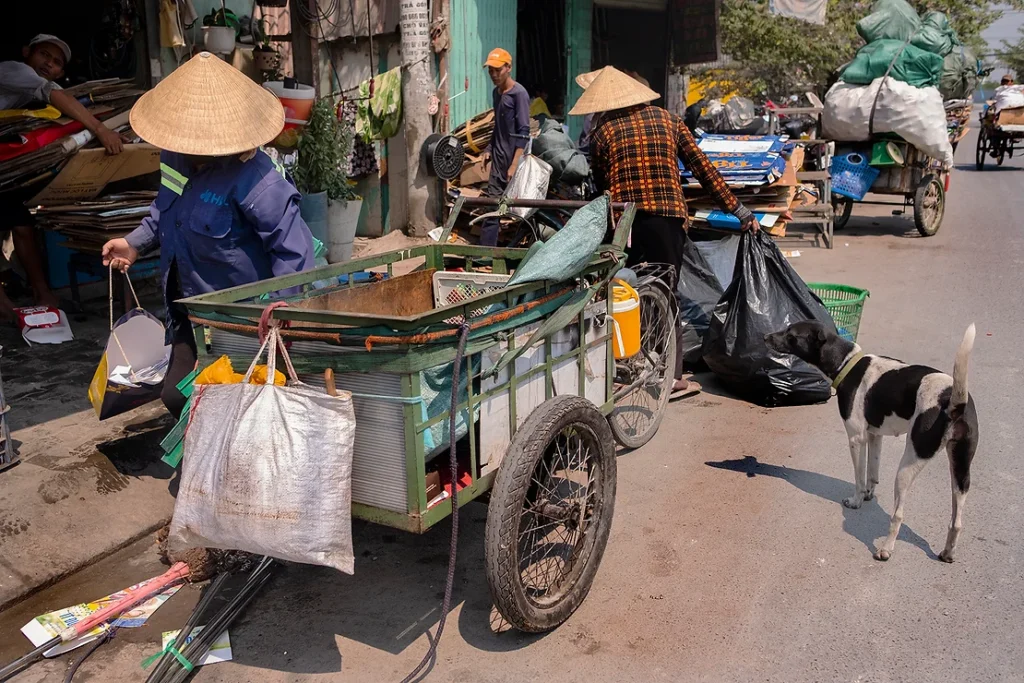
I also had a chance to sit and talk, through an interpreter, to Uyen and her husband Thanh about their personal stories. They came to Saigon about 5 years ago from their home province to the west of the city. Uyen related that by the time she finished high school both her parents had passed on and she had to work to provide for her siblings. She and Thanh married and they have an adult daughter.
Uyen declined to say what they were doing prior to coming to Saigon, but like many, thought it would be for new economic opportunities. It was also where they could get better treatment for their daughter who had developed a mild form of cancer. “She was in and out of hospital for most of last year but is now recovered. She helps me at home with chores while we are out collecting. It’s great to return from a long day and have a meal prepared by our daughter.”
Uyen continued, “Most evenings, we like to just relax, listen to music or watch dramas on television. We have a tight-knit community and on weekends, neighbors gather for spirited games of bingo and to sing karaoke.” She and Thanh added, “Despite the hard work, we know our small efforts are helping with the recycling issue here in HCMC.”
In light of her past difficulties, Uyen remains a bubbly and outgoing woman. She has a quick smile, infectious laugh and certainly knows how to pose for the camera.
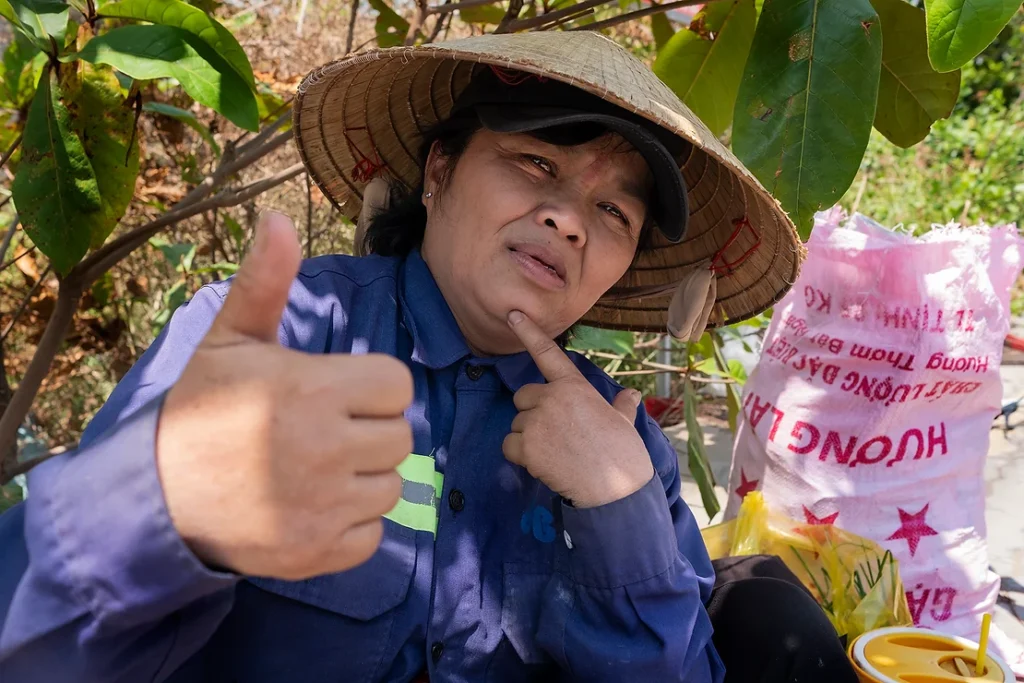
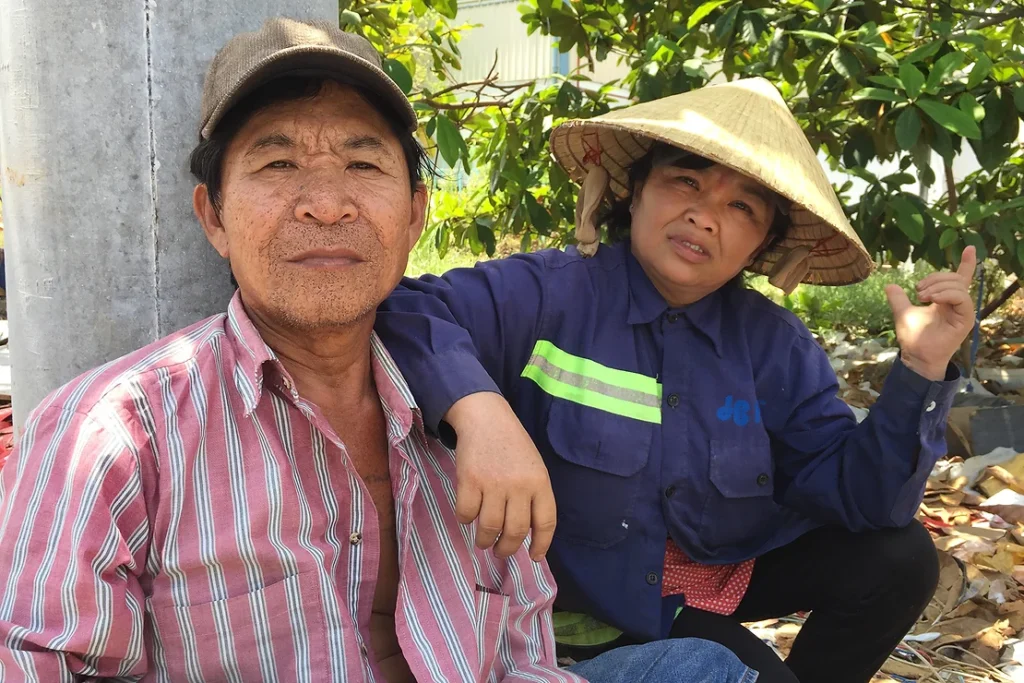
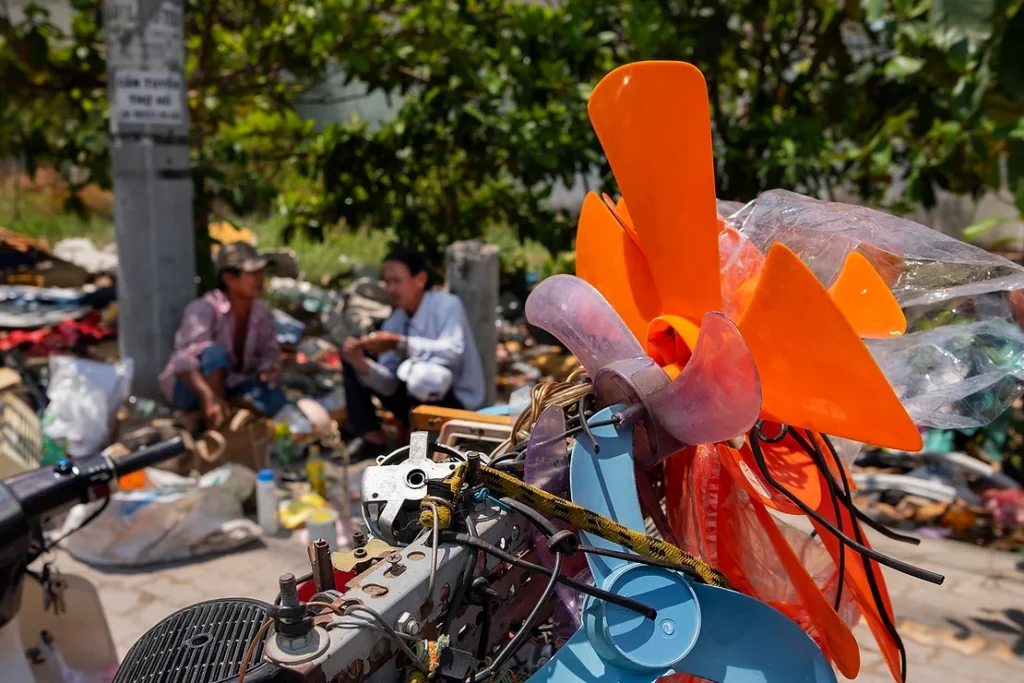
My friend’s Hùng’s family has been acting as ‘recycling middlemen’ [collectors/processors] for over 20 years and have developed a rapport with a number of these grassroots laborers. Their family business collects and separates plastic bottles, scrap plastic and metal, aluminum cans and cardboard.
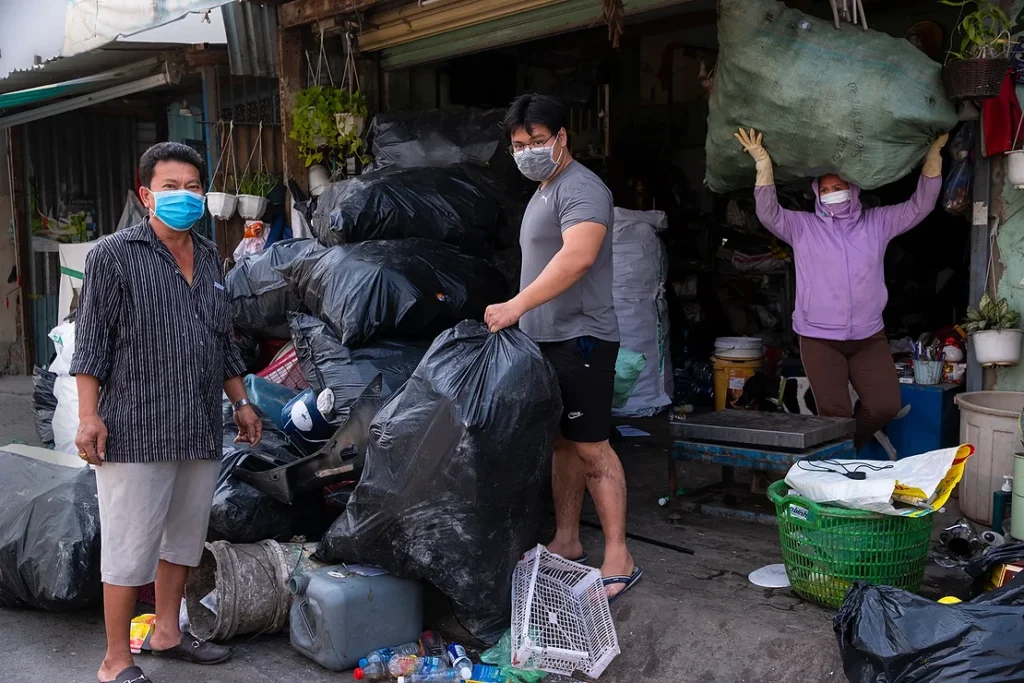
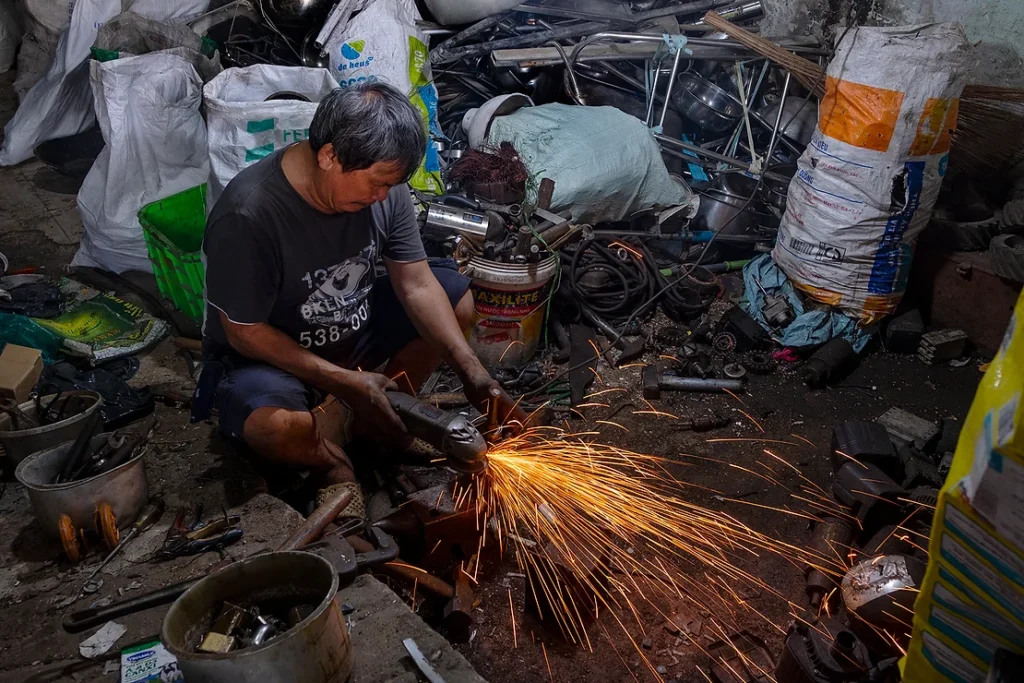
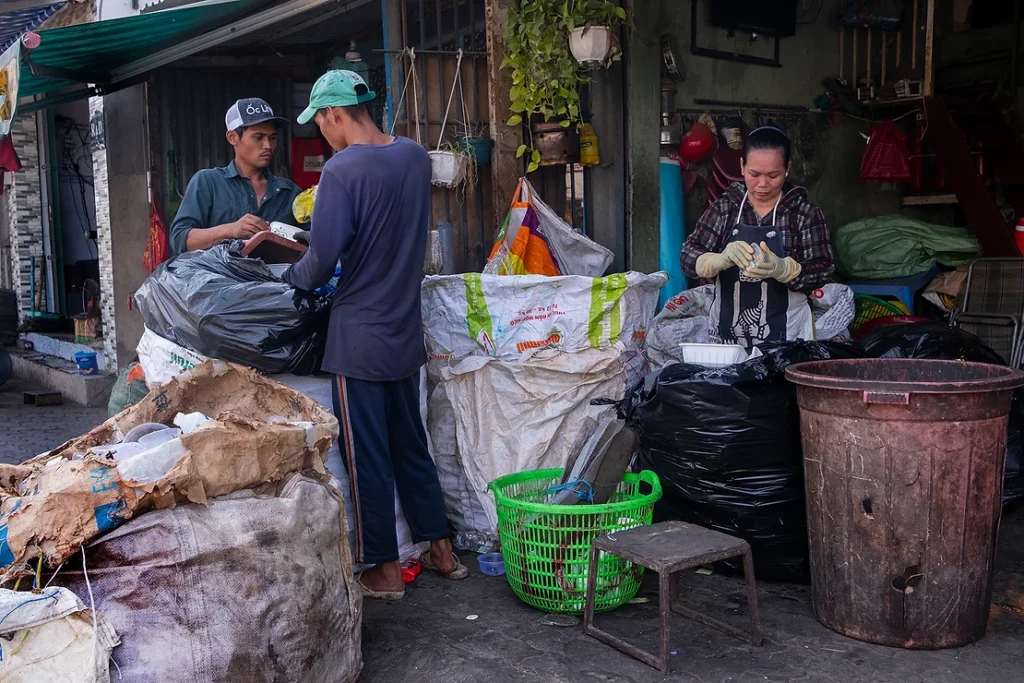
They alerted me to a cardboard drop-off run, so that I could drive with them a short distance to the recycling facility and follow the process. Entering a cavernous building, roughly the size of a basketball arena, the truck is first weighed with its complete cargo; then unloaded onto the floor. The truck is then re-weighed after disgorging its load and the vendor is then compensated on the delivered weight of the cardboard.
Truck after truck made their appearance and suddenly the building was transformed into a beehive of activity. Two bulldozers wrangled the growing mounds of cardboard toward the conveyor belt. The bales [averaging 1,100kgs each] emerged inexorably from the compactor to await their stacking onto a flatbed truck for delivery to a larger processing center.
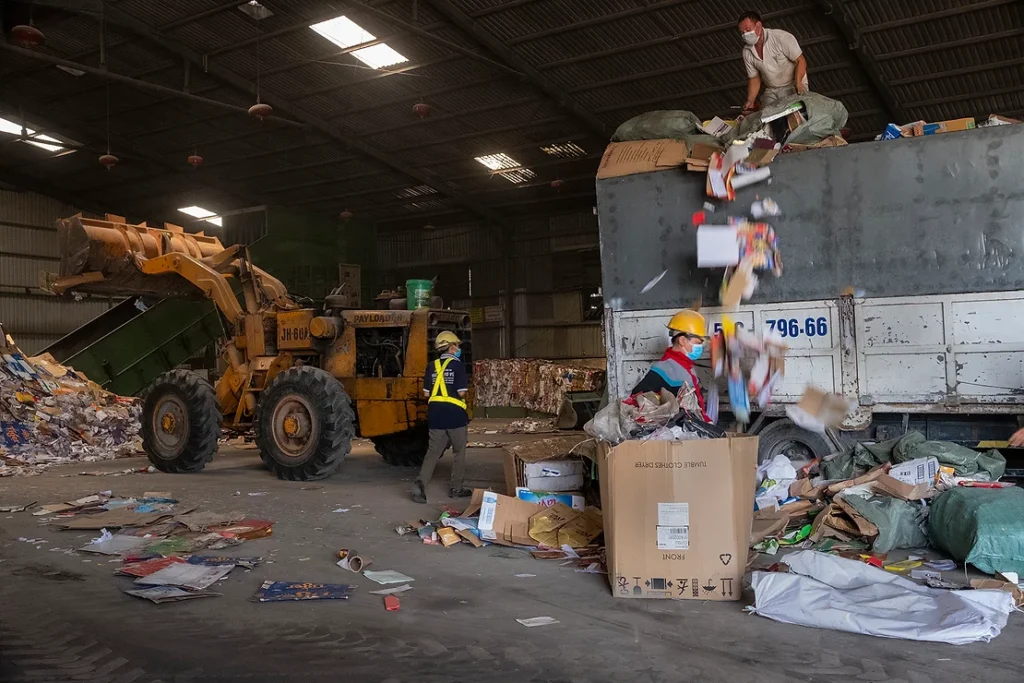
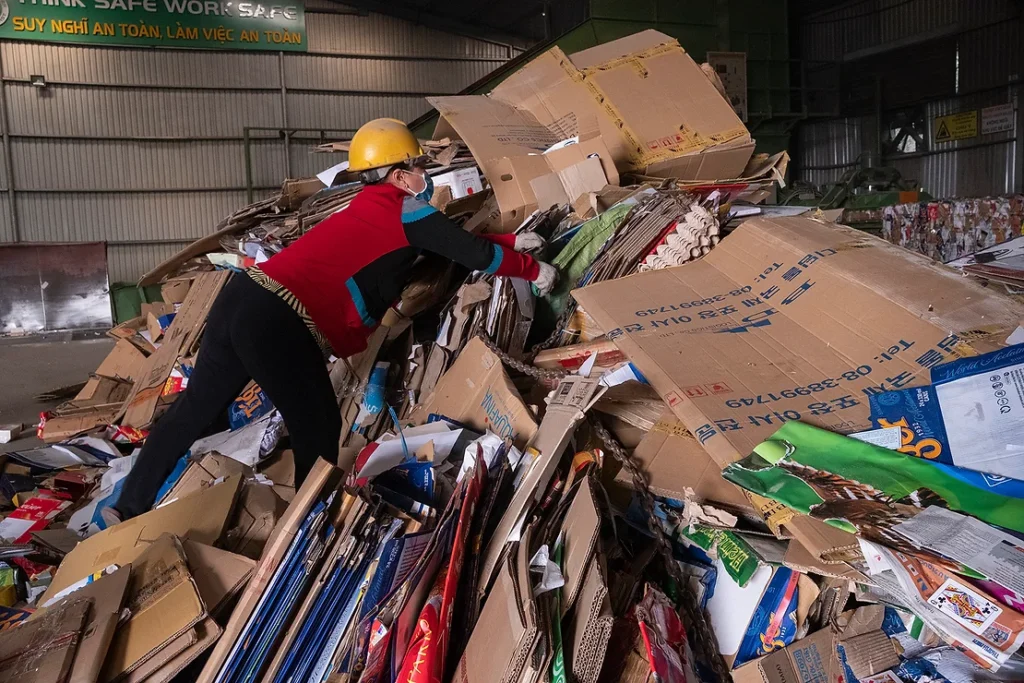
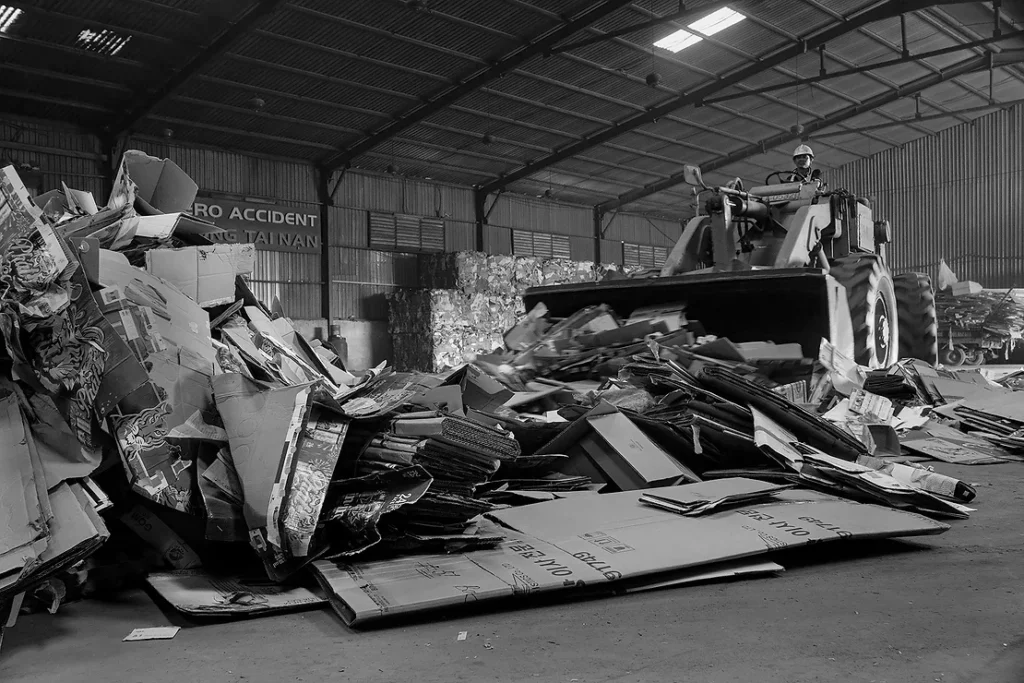
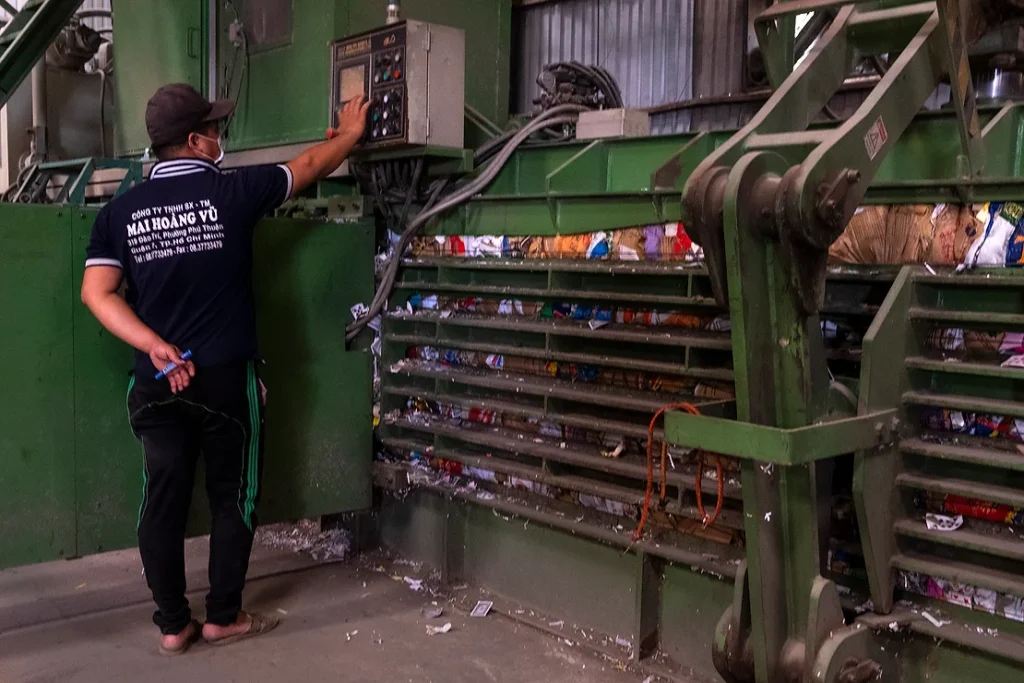
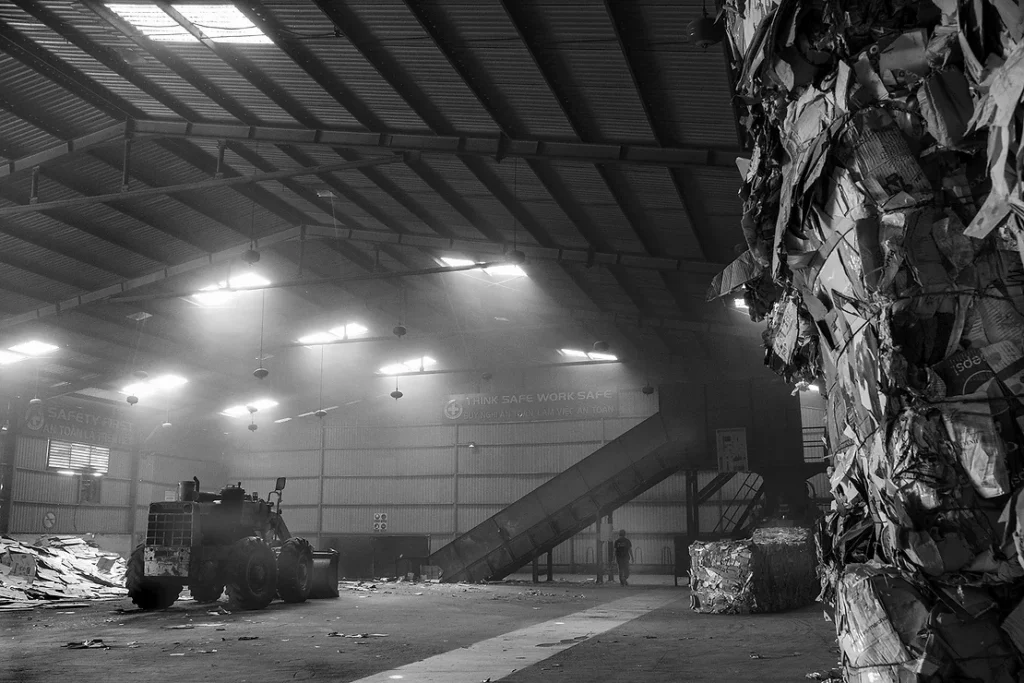
Speaking with the plant manager Nam, I was told they handle three types of cardboard – folding boxes [i.e. a cereal or cookie box]; rigid boxes [i.e. computer or phone boxes] and corrugated shipping boxes [for moving and storage of goods].
According to one company [Cardboard Balers from the UK] that manufactures the baling machines:
· Recycling cardboard only takes 75% of the energy needed to make new cardboard so it makes sense that recycling cardboard is a more sustainable option than cutting down trees to make virgin paper products.
· Most cardboard products can be recycled [including boxes, paper towel and toilet tissue inner rolls].
· It also saves on the amount of imported paper and materials that compose cardboard
· Recycling one ton of used cardboard saves approximately 46 gallons of crude oil.
· The majority of the worlds shipped products use cardboard packaging, so it advantageous to recycle from a cost-benefit perspective.
After returning from the cardboard run, I sat with Hùng to get his perspective on recycling.
J – Why did your parents decide to get into the recycle business in the first place?
H – “My uncle started it about 30-years ago and my dad studied from him and opened his own business with another uncle handling machine parts for recycling.”
JS – How has the business changed over the last 20 years?
H – “20-years ago they just bought plastic, aluminum and metal. Now we take in a variety of products including cardboard.”
JS – How do you get people to come to your shop and not go elsewhere to drop off their collected items?
H – “Loyalty is a big part of the equation. We pay a fair price and the locals know they can trust us. Everyone’s involved. My dad runs the business now and drives the truck to the various processing centers. My mom supervises the scale and payments and I and the team do the heavy lifting.” He noted that the rotund, heavy-duty sacks for holding aluminum cans top off at around 60kgs each and the ones for plastic bottles can top 90kgs.
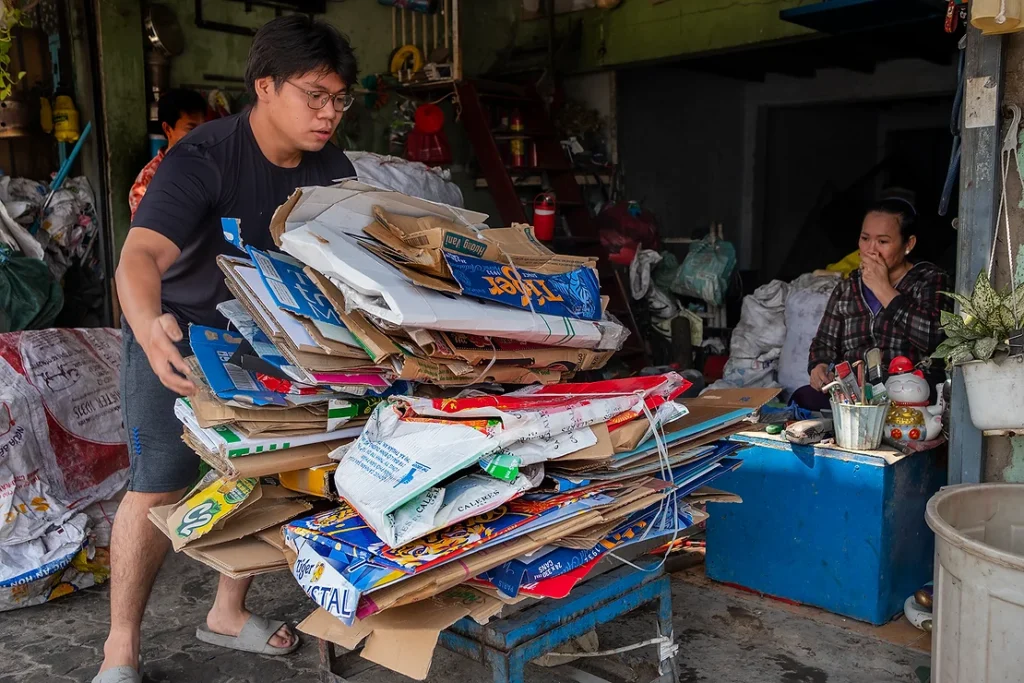
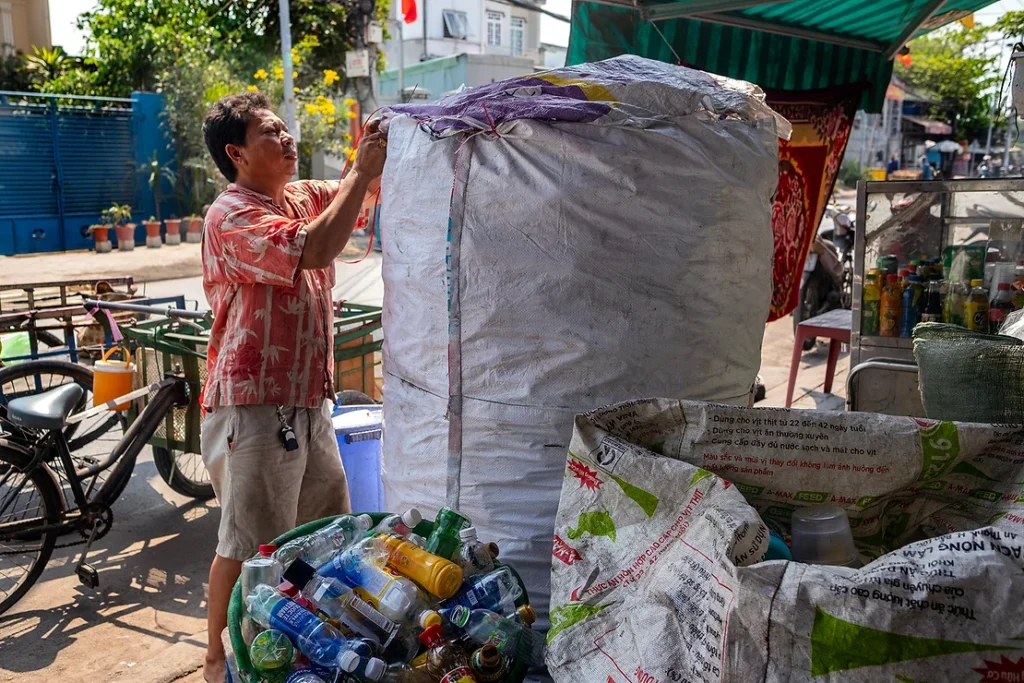
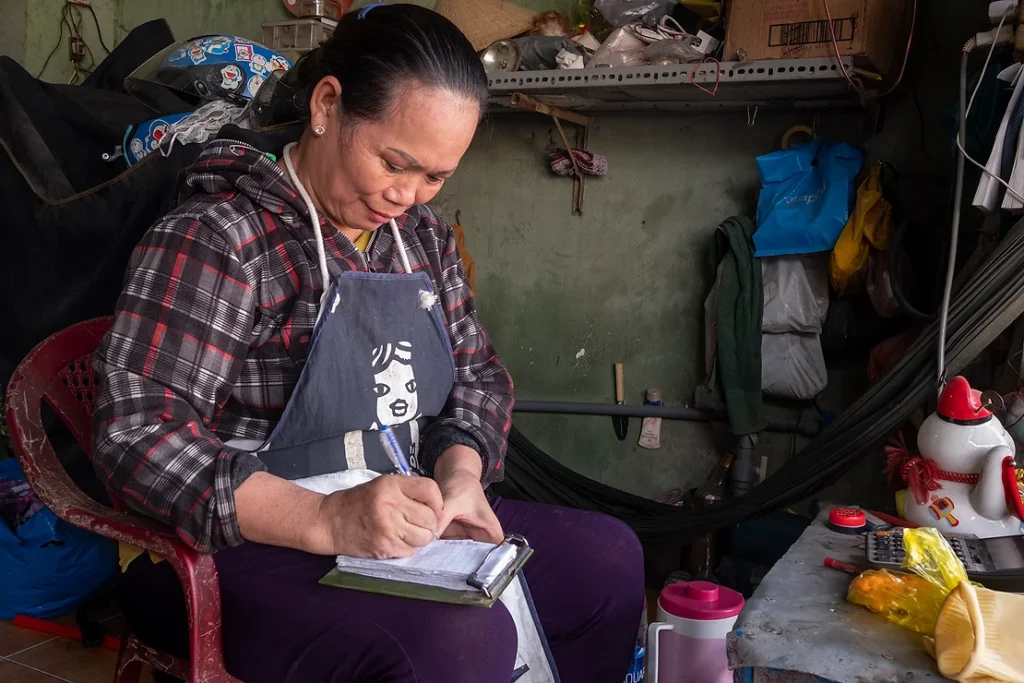
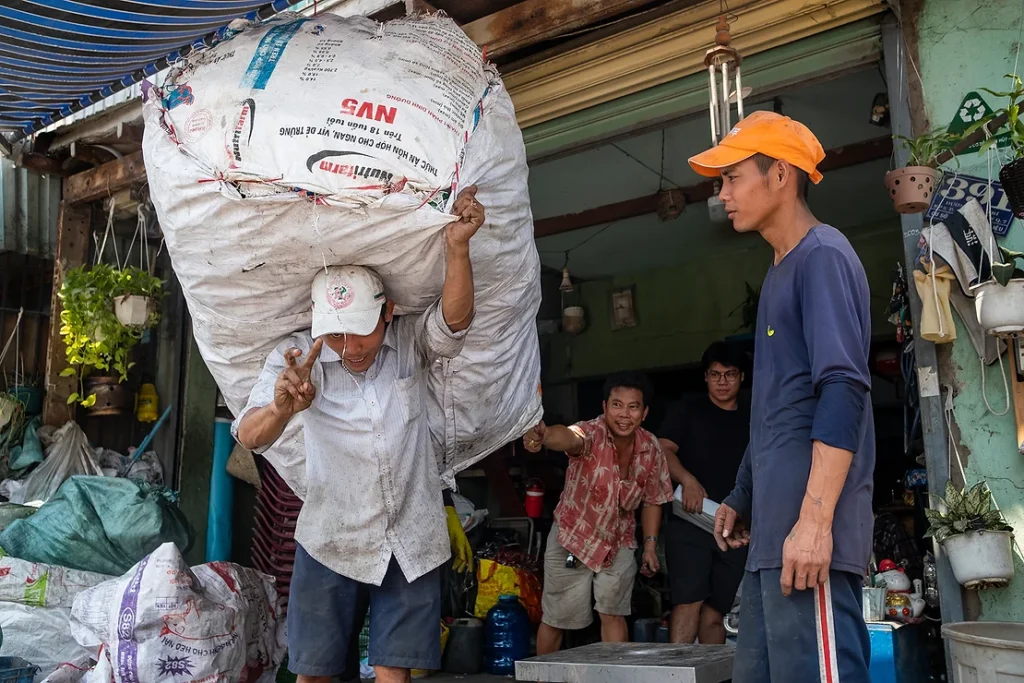
Hùng went on to explain that he expects to graduate later this year with a degree in Environmental Engineering. When I posited if he would then join a larger recycling company, he responded that he will apply his studies to help grow his family business but also wants to pursue a Phd in the field.
A similar scenario of truck weighing before and after unloading was evident when I accompanied the team on a run to out to Bin Chanh to the aluminum can recycling center.
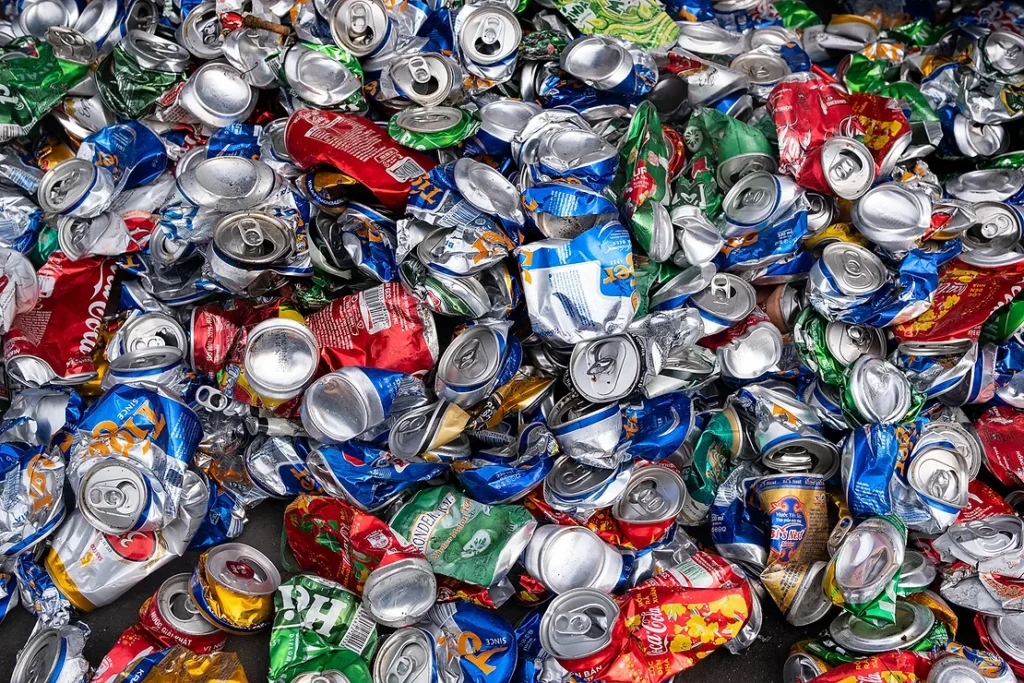
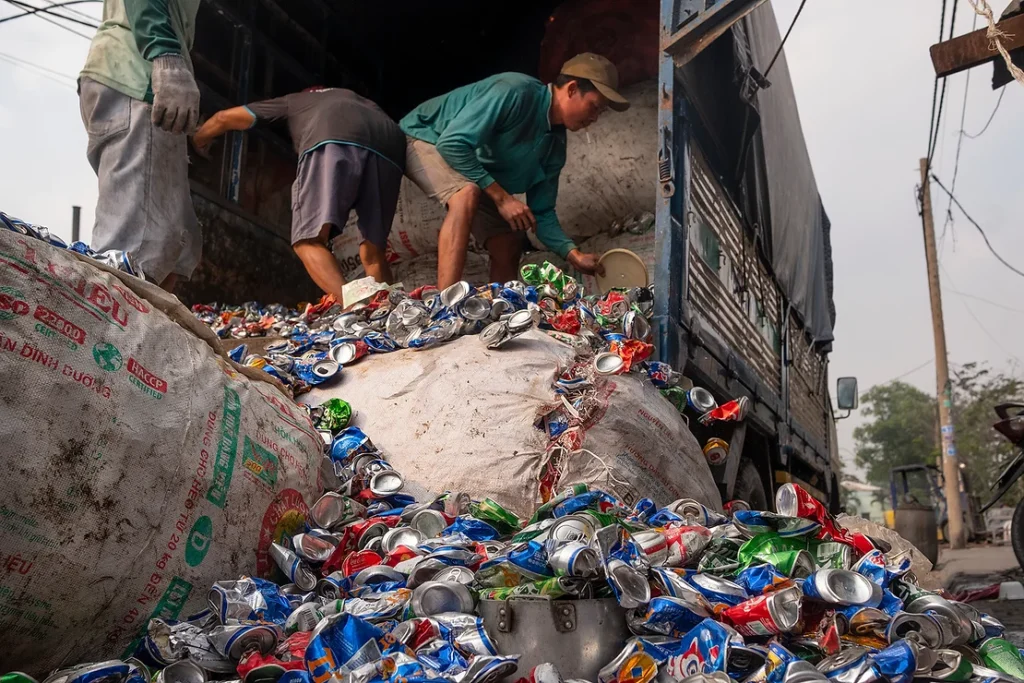
between 700-750kgs/1,540 – 1,650lbs.
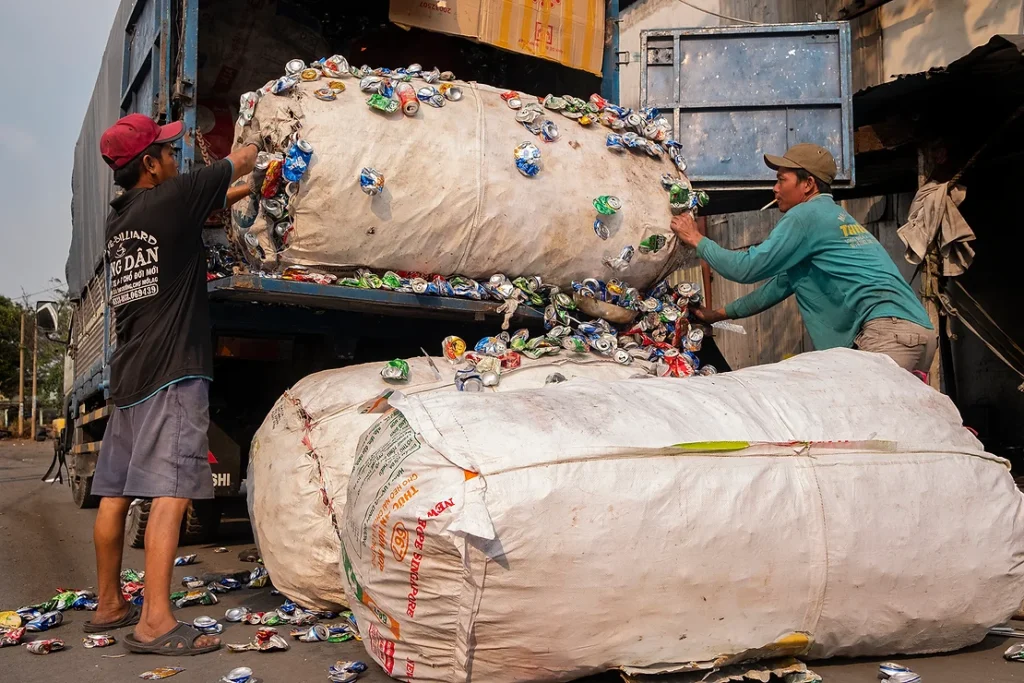
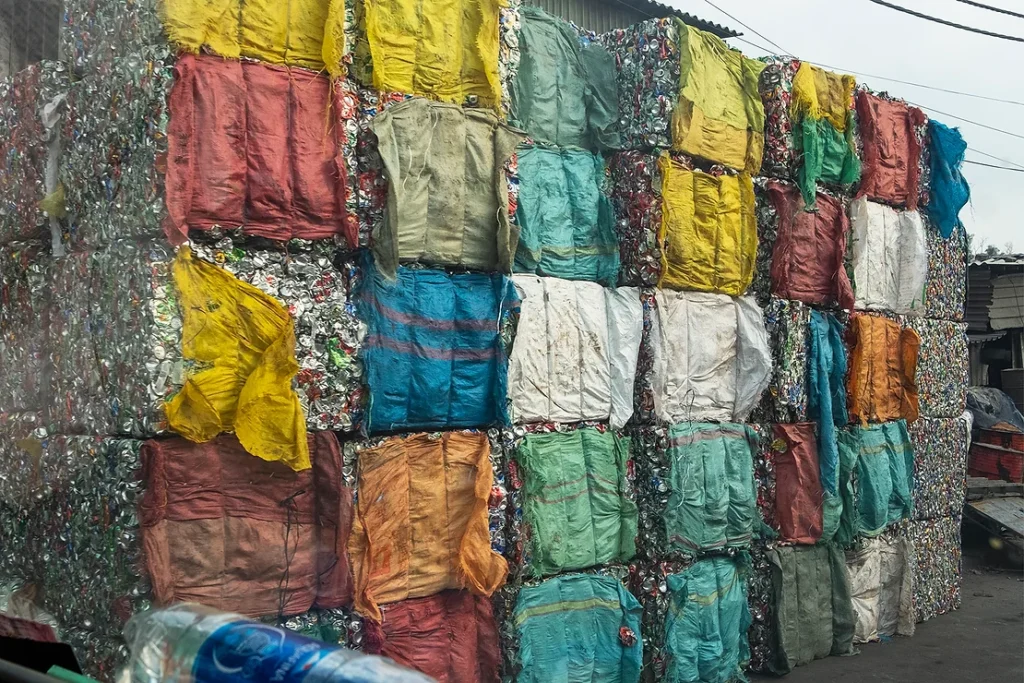
As to the future of recycling in HCMC, Hùng reflected that other countries or states have comprehensive policies in place, whereas Vietnam still has no cohesive plan that includes tax exemptions or incentives. So if waste becomes overloaded, he hopes it will drive new policies to address the issues. Looking ahead, he would like to concentrate more on plastics, even buying a machine that will cut and wash small volumes of plastic for more efficient recycling.
While plastic and human waste products continue to be the major issues as urbanization spreads in greater Saigon, the intelligent use of recycling alternate materials, such as cardboard and aluminum cans, can help alleviate some of the strain on the city’s resources.
Text and all photographs copyright in perpetuity by Jim Selkin
